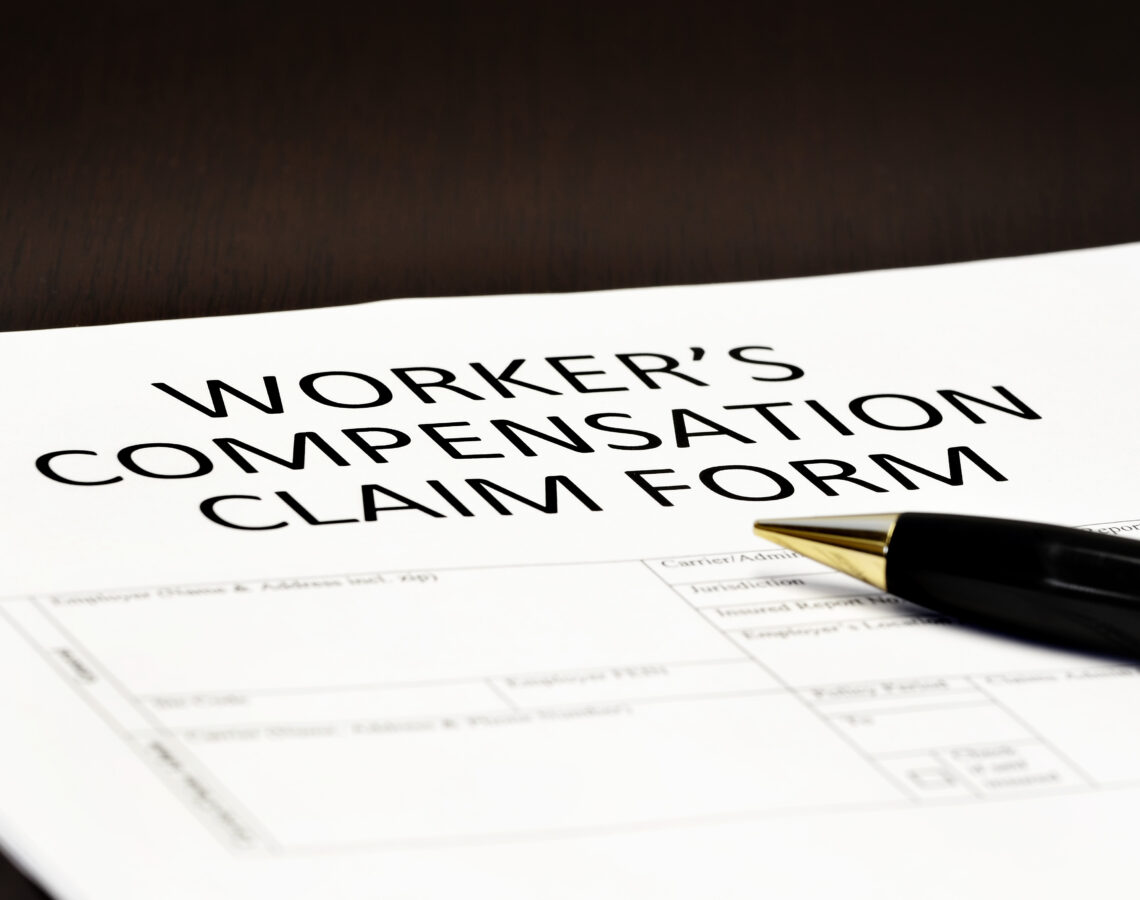How to Prove Negligence in a Third-Party Workplace Accident Claim

Employees injured in restaurants, hotels, retail stores, or similar service environments may be entitled to workers’ compensation benefits. However, in some situations, another person or company—not the employer—may also be legally responsible. These scenarios open the door to a third-party negligence claim, which allows the injured worker to seek additional compensation beyond the limits of the workers’ compensation system.
The exclusive remedy doctrine in Indiana generally prevents employees from suing their employer for personal injuries (Ind. Code § 22-3-2-6). However, that restriction does not apply to third parties whose negligence contributed to the workplace accident. A separate personal injury lawsuit may be filed in these cases, but unlike a workers’ compensation claim, fault must be proven.
This guide by Klezmer Maudlin, PC, explains how to prove negligence in a third-party workplace claim, what evidence can support a case, and why legal coordination matters when workers’ compensation and civil liability overlap. Indianapolis workers’ compensation lawyers at our firm can help protect your rights throughout the process.
When Does a Third-Party Claim Apply in a Workplace Claim?
Not all workplace injuries involve only the employer. In many service industry settings, workers interact with vendors, contractors, delivery drivers, property managers, and others not employed by the same company. If someone outside the employer-employee relationship caused or contributed to the injury, that person or business may be legally responsible under general negligence law.
Examples of third-party negligence include:
- A hotel worker injured by a malfunctioning elevator maintained by an outside vendor
- A server who slips on a freshly mopped floor left wet by an external janitorial company
- A retail employee struck by falling inventory improperly stacked by a merchandising contractor
- A hotel valet is injured when a guest or third-party driver causes a crash
- A food service worker burned by equipment installed incorrectly by a subcontractor
In these situations, the injured employee typically files for workers’ compensation benefits to cover medical costs and wage replacement. However, if a third party’s conduct caused the incident, a personal injury claim may also be filed against that person or business.
Key Differences Between Workers’ Compensation and Third-Party Claims
Understanding the difference between these two legal claims helps clarify when negligence matters.
|
Workers’ Compensation |
Third-Party Personal Injury Lawsuit |
| No proof of fault required | Must prove negligence |
| Limited to medical bills, wage loss, etc. | Can include pain and suffering, emotional distress |
| Cannot sue employer directly (in most cases) | Can sue third parties legally responsible |
| Administered through Indiana Workers’ Comp |
Filed in civil court |
Employees can pursue both claims simultaneously as long as they involve different parties. However, Indiana law may allow the workers’ compensation insurer to be reimbursed from any third-party recovery (Ind. Code § 22-3-2-13). This makes timing, coordination, and evidence management particularly important.
Legal Elements Required in a Third-Party Negligence Case
Unlike a workers’ compensation claim, a third-party injury lawsuit requires the injured person to prove that the third party was negligent and that its negligence caused the injury. Indiana law requires proof of four legal elements:
 1. Duty of Care
1. Duty of Care
The third party must have had a legal obligation to act with reasonable care. In service industry environments, this duty might apply to vendors performing work onsite, delivery drivers operating on the premises, or contractors responsible for installation or maintenance.
2. Breach of Duty
The third party must have failed to meet that obligation. This could include ignoring safety protocols, failing to inspect or repair dangerous conditions, operating equipment recklessly, or performing job duties unsafely.
3. Causation
The injured worker must show that the breach of duty directly caused the accident. For example, suppose a delivery driver blocks a fire exit and an employee trips to avoid the obstruction. In that case, the link between the driver’s conduct and the injury may satisfy this requirement.
4. Damages
Finally, the worker must show that they suffered actual harm. This includes physical injury, medical bills, missed work, and, in some cases, long-term physical limitations or emotional distress. Documentation and evidence help prove the extent of these damages.
Each element must be supported by evidence. The more direct and well-organized the documentation, the stronger the claim.
Types of Evidence That Strengthen a Third-Party Claim
A third-party negligence case requires more than stating that someone acted carelessly. The claim must be supported by documentation, witness accounts, and sometimes technical analysis. Examples of helpful evidence include:
Incident Reports
A workplace report generated after the accident may include early statements, photos, or details identifying the third party’s involvement. These reports can establish timelines and clarify who was present.
Surveillance Footage
Video from the job site may capture the incident, showing how a hazard developed or how a third party was involved. Timely requests to preserve footage are critical, as many systems automatically overwrite data.
Photos of the Scene
Images taken after the injury—especially those showing unsafe conditions, spilled materials, defective equipment, or missing signage—can provide strong support. These photos often establish the conditions at the time of injury.
Witness Statements
Coworkers, supervisors, or even customers may have seen the incident or the behavior leading up to it. Firsthand accounts of what occurred can help clarify fault and contradict a third party’s denial of responsibility.
Medical Records
Medical documentation provides evidence of injury, cause (if known), and extent. Treatment timelines also help confirm that the injuries occurred as claimed.
Maintenance or Service Contracts
If the third party was responsible for maintaining or inspecting the area or equipment involved, a contract may help show they had a duty to act. Failure to fulfill contractual obligations can support a breach of duty claim.
Prior Complaints or Safety Violations
If the third party has a history of similar conduct—or has been warned about the condition before—this may support the claim that their behavior was negligent and preventable.
Gathering evidence early helps strengthen the claim and avoid disputes later. A coordinated approach between workers’ compensation counsel and the third-party injury attorney often improves results in both claims.
Common Defenses in Third-Party Workplace Injury Claims
When a third-party claim is filed, the defendant often disputes liability to avoid paying damages. Knowing the types of arguments that may be raised helps anticipate challenges and respond with appropriate evidence.
No Duty Owed. The defendant may claim no legal obligation to protect the injured worker. This can occur when the third party argues they had no role in the specific area, equipment, or task. To counter this, the injured worker must show that the third party had control over the hazard or created the condition that caused the injury.
Lack of Causation. Another defense involves claiming that the third party’s actions did not directly cause the injury. The defense may suggest the harm was due to unrelated events or the worker’s own actions. Medical records, witness testimony, and incident reports can help establish a clear link between the third party’s conduct and the injury.
Comparative Fault. Indiana applies a modified comparative fault rule. If the injured worker is found partially responsible for the incident, their recovery may be reduced. They cannot recover damages if they are seen as more than 50 percent responsible. Third parties may argue that the worker ignored safety instructions, used equipment improperly, or contributed to the accident through their own conduct.
Intervening Acts. A defendant may also claim that another party—not them—was responsible. For example, a property manager may blame a separate maintenance contractor for failing to repair a reported hazard. In these cases, additional investigation may be needed to determine who had actual control or responsibility.
Each defense must be addressed with precise facts and clear documentation. Early legal involvement helps build a strategy for effectively rebutting these arguments.
Statute of Limitations for Third-Party Claims in Indiana
Indiana law imposes a two-year statute of limitations for most personal injury claims, including those involving third-party workplace injuries. This period begins on the date of the incident. If a lawsuit is not filed within that timeframe, the injured person typically loses the right to pursue compensation through the courts.
Some limited exceptions exist. Tolling provisions may apply if the injured worker is under 18 or if the injury is not immediately apparent. However, such extensions are narrow and not guaranteed. In practice, most cases must be filed within the two-year window to ensure that evidence is preserved and procedural errors are avoided.
In contrast, the workers’ compensation process has separate filing deadlines, including a two-year window to file an Application for Adjustment of Claim. When both types of claims are involved, timing must be managed carefully to preserve eligibility under both systems.
How Third-Party Claims Interact with Workers’ Compensation Benefits
Employees who recover compensation from a third-party lawsuit may still receive workers’ compensation benefits, but Indiana law limits double recovery. Under Indiana Code § 22-3-2-13, if a third-party lawsuit results in a settlement or verdict, the employer—or their insurance carrier—may be entitled to reimbursement for previously paid workers’ compensation benefits.
This process is known as subrogation. The idea is to prevent the injured worker from collecting the same damages twice: once through the compensation system and again through civil litigation.
Key points to consider include:
- Subrogation applies only to amounts paid under workers’ compensation, including medical costs and wage loss.
- The injured worker may still keep compensation for pain and suffering, emotional distress, or other damages not covered by workers’ compensation.
- Settlement agreements should account for the insurer’s right to reimbursement to avoid delays or disputes.
Coordinating the timing and terms of both claims helps protect the worker’s financial interests. It also ensures compliance with Indiana’s reimbursement rules and prevents misunderstandings during the litigation or settlement.
Why Legal Coordination Matters in Third-Party Injury Cases
Pursuing workers’ compensation and third-party negligence claims at the same time can create legal and procedural overlap. Coordination helps ensure that deadlines are met, evidence is preserved, and the injured worker receives full value from all available claims.
A well-managed case involves:
- Accurate allocation of damages between the workers’ compensation and third-party claim
- Timely discovery of evidence that supports both claims, including photos, reports, and witness statements
- Strategic timing of settlement offers or negotiations to ensure no benefit is waived or diminished
- Clear communication with insurance adjusters and opposing counsel to protect the worker’s interests
An experienced Indiana workers compensation attorney can help determine whether a third-party claim is viable, how it may affect workers’ compensation benefits, and what steps must be taken to secure the strongest possible result. Because these cases involve multiple legal frameworks, they benefit from early review and case planning.
Schedule a Consultation to Discuss a Third-Party Negligence Claim
 Workplace injuries in restaurants, hotels, retail spaces, and other service environments may involve more than just workers’ compensation. When another company or individual causes the injury, a third-party negligence claim may offer a separate path to compensation.
Workplace injuries in restaurants, hotels, retail spaces, and other service environments may involve more than just workers’ compensation. When another company or individual causes the injury, a third-party negligence claim may offer a separate path to compensation.
These claims require evidence, legal analysis, and attention to procedural rules. They can also affect the outcome of the workers’ compensation case. For these reasons, a legal consultation is the most reliable way to determine the next steps and evaluate whether a third-party lawsuit may be appropriate.
Klezmer Maudlin, PC, helps injured workers across Indiana assess their options under workers’ compensation law and third-party liability. Our team of skilled workers’ compensation attorneys understands how service industry jobs present unique safety risks, and we are prepared to review whether someone other than the employer may be responsible.
For a free consultation, call 317-569-9644. Please bring documentation such as injury reports, photos, witness information, and correspondence with insurers or third parties. Early review allows for more effective legal representation and helps protect your rights from the start.

